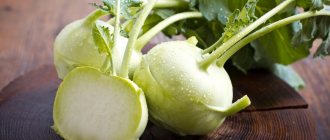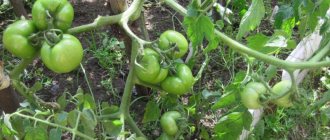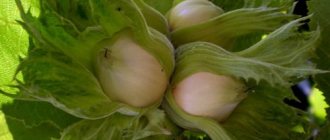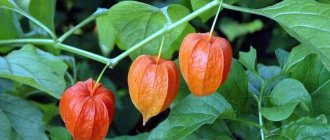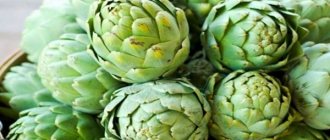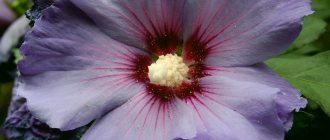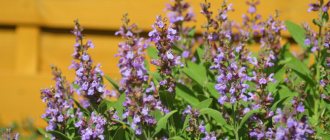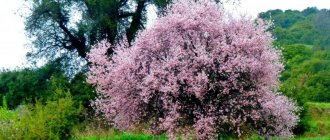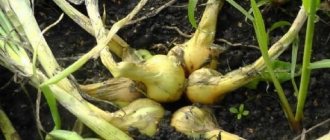What do squash look like and what are they useful for?
Patisson is an annual bushy plant or subshrub belonging to the Pumpkin family. Its closest “relatives,” pumpkin and zucchini, have long been well known to gardeners. Most botanists consider South America to be the birthplace of squash, although there is evidence that this plant was cultivated in Ancient Egypt. It has not yet been possible to find wild squash in nature, so the question remains open.
Europe became acquainted with them during the era of great geographical discoveries. The plant was brought home by Spanish sailors. The Mediterranean climate suited the culture very well, and it quickly gained popularity. Nowadays squash is an almost integral part of French cuisine. Even the common name comes from the French pâté (pie), which describes the unusual shape of the fruit. Squash is also often called “plate pumpkin”.
The exotic vegetable came to Russia in the 17th century. It cannot be said that the culture fell in love immediately and forever, however, after two hundred years, squash could be found even in Siberia. They have adapted well to the harsh climate. Although their frost resistance is such that most varieties will not tolerate even a short-term drop in temperature to negative values.
The plant is quite compact, the vines are short. The leaves are large, harsh to the touch, covered with sparse “villi”. The flowers are solitary, golden-yellow, bell-shaped. They are unisexual, so in order for fruit to set, the plant needs the “help” of insects or a gardener.
Squash bushes are usually quite compact
The fruit of the squash is pumpkin. Weight varies from 250–300 g to 800–1000 g, diameter - from 7–10 cm to 25–30 cm. Harvesting should not be delayed. The larger the squash becomes, the more rough its skin becomes. The pulp becomes cottony and almost tasteless. Such specimens can only be used for collecting seeds if the variety being grown is not a hybrid.
Squash flowers are unisexual, pollination is impossible without outside help
Most often, the skin is colored white, light green or dark green. But breeders have bred yellow, orange, purple, and variegated squash. The shape of the fruit resembles a plate or bowl. The pulp is tender, with a slight nutty flavor. Although some gourmets note that the taste of squash reminds them of asparagus or artichokes.
Selected varieties of squash differ mainly in the color of the skin and the shape of the fruit
Squash are widely used in cooking. They can replace zucchini in any recipe. The unusual shape of the fruit makes it ideal for stuffing. Both mature and young squash are eaten. The latter can generally be eaten raw. It is the fruits at the age of 7–10 days, which have reached a diameter of 5–7 cm, that are most highly valued by professional chefs. They are also stewed, fried, pickled, and salted.
Squash is stuffed with meat, vegetables, rice; the shape of the fruit is very convenient for this.
Squash is not only tasty, but also healthy. The pulp is rich in pectin, fiber, protein, unsaturated fatty acids, glucose and fructose. It is quickly absorbed and helps digest heavier foods. Among microelements, we can note the presence of potassium, phosphorus, magnesium, calcium, copper, iron, zinc, cobalt, sodium. In terms of the content of vitamins B, C, E, PP, squash is superior to pumpkins and zucchini. Yellow-skinned varieties are rich in carotenoids and lutein. This natural antioxidant helps improve blood composition (especially with hemoglobin deficiency), lower cholesterol levels, and has a beneficial effect on vision.
The zucchini diet has long been known and proven to be effective. Its main product can be replaced with squash. They are also low in calories. Nutritionists recommend consuming fruits to prevent diseases of the cardiovascular system, normalize intestinal function, and for problems with the kidneys and liver. Squash is hypoallergenic, and mashed potatoes made from them are suitable even for small children. The only contraindication is individual intolerance.
Squash seeds can be compared to eggs in lecithin content. It is a valuable source of protein for vegetarians. Powder made from them helps to normalize the activity of the endocrine and nervous systems. The juice effectively removes excess salts and fluids from the body. Its regular use is an effective prevention of kidney disease. A good diuretic and mild laxative is pulp puree.
The pulp of squash is very good for health; its seeds are also used in folk medicine.
It is quite easy to distinguish squash from zucchini. Just look at the fruits. If we talk about less noticeable differences, squash bushes are more compact and the leaves are smaller. The pulp of the fruit is denser, it has its own distinct, rich taste. But zucchini is much superior to squash in terms of yield and early maturity.
Video: squash and its health benefits
What is he like, squash?
Patisson is an annual vegetable crop, which is represented by shrub or subshrub forms. The structure of the leaves, stems and large flowers is identical to zucchini. External differences begin from the stage of fruit formation.
The fruits of squash are round or star-shaped pumpkins, slightly flattened. Their edges can be smooth or slightly wavy. As for color, squash comes in white, dark green, bright yellow, and orange. Ripe pumpkins can be up to 30 cm in diameter. The most delicious fruits are those that reach 10-12 cm in diameter.
Varieties popular among gardeners
Patisson is a crop popular among breeders. They have bred quite a few varieties and hybrids, differing mainly in the color of the skin and the shape of the fruit.
The most commonly grown varieties of squash are:
- White 13. Medium ripening variety, was bred in the mid-60s of the last century. It is still considered one of the best for growing without shelter. It is distinguished by its ease of care (even compared to its “relatives”) and frost resistance. Productivity - 3–5 kg per bush. A fully ripe squash weighs 400–500 g, young fruits weigh 90–100 g. They are shaped like a plate, the “teeth” along the edge are weakly expressed. The skin is white or pale green, glossy. The fruits ripen 65–70 days after emergence.
- Umbrella. Early variety. The harvest ripens in 45–50 days. You can count on 4–5 kg/m². The plant is quite powerful, semi-bush. The fruit is bell-shaped, the surface is slightly bumpy. The skin is whitish or greenish. It is thin, so the fruits do not differ in keeping quality and transportability. The average weight of squash is 300–400 g, diameter is 10–12 cm.
- Disk. The fruits are harvested 40–50 days after emergence. The squash is disc-shaped, with a pronounced division into segments, the “teeth” along the edge are almost invisible. Average weight: 350–400 g. White skin. The pulp is medium dense, not particularly juicy. The fruits are well stored and can last until mid-winter. A significant drawback is the tendency to be affected by powdery mildew.
- Cheburashka. One of the earliest varieties, it takes 39 days from the emergence of seedlings to the fruits reaching technical maturity. The plant is powerful, forms up to eight lashes. Fruit weight is 200–400 g, diameter is 9–10 cm, the skin is white and thin. The pulp is snow-white, delicate in consistency, juicy. Valued for its increased frost resistance, taste, and mass ripening of fruits.
- Fouette. A mid-early variety, the fruits ripen in 50–55 days. The fruits are one-dimensional, symmetrical, plate-shaped with a “wavy” edge. Weight - 280–300 g. The skin is golden-orange, thin but durable. The pulp is snow-white, dense. The variety stands out for its good keeping quality.
- Sun. The growing season is 58–70 days, depending on the weather. The bush is very compact, weakly branching. The fruit is disc-shaped, with a scalloped edge. Weight - 250–300 g. As it ripens, the color of the skin changes from pale yellow to bright orange. The pulp is dense, creamy beige, very tasty. Plants extremely rarely suffer from true and downy mildew.
- UFO orange. Early variety. The plant is compact, bushy. The weight of the fruit varies from 280–300 g to 500 g. The skin is pale yellow and shiny. The taste is excellent. Average yield is 3–5.5 kg/m². There is also a white UFO variety, which differs in practically nothing except the color of the skin.
- Chunga-Changa. An early variety characterized by frost resistance. The plant is compact. The fruits ripen in 42–45 days. The skin is a rich dark green color, the flesh is creamy beige, juicy. Average weight - 400–450 g. Patissons are disc-shaped, with a “scalloped” edge. The variety has good immunity.
- Gosh. The fruits ripen in 45–50 days. The bush is compact, the leaves are small. The fruits are dark malachite, almost black. The division into segments is clearly expressed. The pulp is snow-white, dense, not particularly juicy. The average weight of squash is 150–250 g. Productivity is 1.3–4.2 kg/m². It depends on agricultural technology; the variety is quite demanding in care.
- Bingo Bongo. An early variety with fruits of an unusual blue-violet color. They are disc-shaped, almost without “teeth”. The bush is distinguished by its growth rate, but at the same time it is quite compact. The harvest ripens in an average of 40 days.
- Polo. Early ripening squash. The average fruit weight is 300–400 g. The plant is compact. The fruit is plate-shaped, the skin color varies from milky green to salad green. The pulp is snow-white, not too dense. The variety is valued for its consistently high yield (8.8 kg/m²) and resistance to downy mildew.
- Sunny Bunny. An early variety, the harvest takes 42–46 days to ripen. The fruits are disc-shaped, the skin is dark yellow, the flesh is creamy-orange. The average weight of squash is 150–250 g. The variety is valued for the presentability and taste of the fruit, good yield (4.5 kg/m²), and resistance to powdery mildew.
- Watermelon F1. A mid-season hybrid, distinguished by its original variegated fruit color. The skin has alternating wide light and dark green longitudinal stripes. As they ripen, the disc-shaped squash becomes slightly rounded, becoming even more watermelon-like. The average weight of the fruit is 300–450 g. The plant is powerful, intensively branching.
- Chartreuse F1. An early ripening hybrid, distinguished by the taste of the fruit. The skin is dark green, sometimes with yellowish-white or salad stripes and spots, the flesh is salad. As it ripens, it gradually turns white. The diameter of the fruit is no more than 3 cm, weight is 50–70 g.
- Piglet. Early ripening squash ripens in an average of 50 days. The skin is milky green, smooth. Average weight - 225 g. The taste is not bad, but the yield is only 1.5 kg/m². However, the variety tolerates drought very well.
- Sunny Delight. An early variety of squash from the Netherlands. The fruits have a typical shape for the culture, the skin is yellow, glossy, the flesh is white. Average weight - 80–100 g. Valued for its excellent taste, high yield (up to 16.5 kg/m²) and good shelf life. Fruiting continues almost until the first frost; the plants tolerate drought well.
- Mini baby. The plant is compact, the leaves are small. The diameter of the fruit is 3–5 cm. The harvest ripens in 50 days. You can count on 3–5 kg per bush. The skin of the disc-shaped fruits is pale green, the flesh is almost white.
Photo gallery: squash varieties popular among Russian gardeners
Patisson White 13 - one of the old time-tested varieties
Patisson Umbrella is not suitable for transportation and long-term storage
Patisson Disk is often infected with powdery mildew Patisson Cheburashka belongs to the category of ultra-early varieties Patisson Fuete is distinguished by its presentable type of fruit
Patisson Sun is a very compact plant, it can be grown even at home
Orange squash UFO is valued for the taste of its fruit.
Chung-Chang's squash is distinguished by its frost resistance and good immunity
Patisson Gosha, unlike other varieties, is quite demanding in care
Patisson Bingo-Bongo stands out for its unusual fruit coloring
Patisson Polo consistently produces crops, even if the weather in summer is not very favorable
Patisson Sunny Bunny - one of the popular early varieties
Patisson Arbuzinka F1 looks very unusual
Patisson Chartreuse F1 is very highly regarded by professional chefs
Patisson Piglet tolerates drought well, but does not have high yields
Patisson Sunny Delight is a Dutch variety popular all over the world.
Mini-crumb squash can be salted and pickled whole
Squash vegetable - description
Patisson is a moisture-loving annual bush-shaped crop with hard wide leaves and yellow single flowers. The appearance of the fruit depends on the variety and may resemble a disc, umbrella, bell flower, or plate with a jagged or smooth edge. The color palette ranges from white, light yellow and cream to bright orange, dark green and lilac.
Squash - beneficial properties
Ripe fruits are rich in fiber, lecithin, vitamins A, C and some B vitamins. Squash is low-calorie and nutritious, recommended for people suffering from diseases of the stomach, liver, and cardiovascular system.
It is customary to eat very young fruits, the pulp of which is richest and easiest to prepare.
Growing squash seedlings
Most often, gardeners, in order to get a harvest of squash as early as possible, grow this crop with seedlings. This method is also practiced in regions with a temperate climate, where the short summer is characterized by unpredictability in terms of weather.
Before planting, pre-planting seed preparation is required. This also applies to those that will be planted directly into the garden bed. The treatment stimulates the appearance of more female flowers. First, the seeds are wrapped for a day in a cloth moistened with a solution of any biostimulant, not allowing it to dry out. Then they are washed and kept in a warm place for another two days, wrapped in gauze moistened with plain water. Warming up the seeds takes less time - they are immersed in hot (50-60ºC) water for 5–6 hours or kept in an oven preheated to the same temperature. Another option is the so-called shock therapy. During the week, the seeds buried in damp sand are put into the refrigerator at night, and during the day they are placed on a sunny windowsill.
Squash seeds definitely need pre-planting preparation
Squash are very susceptible to fungal diseases, so immediately before planting, the seeds are pickled for 15–20 minutes in a bright pink solution of potassium permanganate or any fungicide of biological origin (Bayleton, Alirin-B, Ridomil-Gold). Then they are washed in cool water and dried to a free-flowing state.
Seeds for seedlings are planted in the second half of April. It is better to immediately put it in small peat pots; the crop does not tolerate picking and replanting very well.
- The containers are filled with a mixture of humus and universal soil for seedlings (1:1). The seeds are planted to a depth of 3–4 cm. The substrate is watered moderately, and the pots are covered with film or glass.
- Until seedlings emerge (this takes 7–10 days), they are kept in the dark at a temperature of about 30ºC. As soon as the seeds germinate, the shelter is removed, it is lowered to 22–24ºС during the day and 18–20ºС at night. Sudden temperature changes are very harmful for seedlings.
- Seedlings at the age of 10–12 days are fed by watering with a solution of simple superphosphate (3–5 g per liter of water). Water the seedlings moderately, once every 3–4 days. Otherwise, the squash may rot.
- A week before planting, the seedlings are sprayed with a solution of urea or other nitrogen-containing fertilizer to increase its immunity. Then they begin to harden, gradually extending the time spent in the open air from 2–3 hours to 8–10 hours. The window in the room where the seedlings are located is not closed at night.
Growing squash seedlings allows you to get the harvest earlier
Seedlings are ready for planting in the ground in 25–30 days, at the end of May or at the very beginning of June. They should have at least 2-3 true leaves. The seedlings are planted in holes about 15 cm deep, the distance between them is 70–80 cm. The optimal time for the procedure is early morning or evening after sunset.
The holes are well shed with water. A handful of humus, a tablespoon of sifted wood ash and a little onion peel are placed at the bottom. The seedlings are planted together with a peat pot or a lump of earth, buried down to the first cotyledon leaves. The soil is carefully compacted, the seedlings are watered again, spending about 1 liter of water per plant. Until the squash begins to grow, it is advisable to protect them from direct sunlight by constructing a temporary canopy from any white covering material.
Squash are planted in the ground, deepening to the first cotyledon leaves.
Protecting squash from disease
Squash, like zucchini, is affected by root rot at increased watering rates, powdery mildew, fusarium, and green mosaic. It is not recommended to use chemicals on squash. If the plants become sick en masse, they and the soil are treated with biofungicides:
- trichodermin,
- pentophagus,
- alyrin,
- phytosporin-M,
- planrizom,
- gamair.
Processing of squash is carried out strictly according to the recommendations. To prevent widespread disease, it is better to treat plants with biofungicides 2-3 times a month for preventive purposes from the first month. You can use tank mixtures to reduce the load on the bush. Biofungicides are harmless to humans, birds and children, so they are recommended to be used throughout the growing season, until the start of harvesting.
Planting seeds in open ground
Squash seeds can be planted immediately in open ground. But this method is practiced mainly in southern regions with warm climates. Throughout the rest of Russia, the crop may simply not have time to ripen if the weather during the summer is cold, cloudy and rainy.
For the garden bed, choose an open place well lit by the sun. Groundwater should not come closer to the surface than 1.5–2 m. The substrate should be fertile, but light and loose. The best option is loam. Squash will not grow in an acidified or saline substrate, or in soil that is more like a swamp.
The bed with squash should be well lit by the sun
“Predecessors” in the garden are suitable for any crop, with the exception of plants from the Pumpkin family. It is better to place them away from planting pumpkins and zucchini. These plants cross pollinate very easily. It is completely impossible to predict what exactly will ripen on the bush.
The site has been prepared since the fall. This also applies to the garden bed where you plan to plant squash seedlings. The soil is dug up, simultaneously adding humus (5 l/m²), phosphorus (15–20 g/m²) and potassium (8–10 g/m²) fertilizers. If the soil is acidic, add dolomite flour, powdered eggshells or slaked lime.
Humus is a natural remedy for increasing soil fertility
In the spring, a couple of weeks before planting, the soil is loosened well, and the bed is watered with a solution of any complex fertilizer for vegetable crops. The soil at a depth of 10–15 cm should warm up to at least 15ºC by the time of planting. In regions with a subtropical climate, squash seeds can be planted as early as the end of April or in the first ten days of May. In the Moscow region and central Russia, this period is shifted to its second half, and in the Urals and Siberia you will have to wait until the beginning of June. Seeds planted in soil that has not warmed up will most likely rot.
Seeds of 1–2 pieces are planted in holes at intervals of 70–80 cm, deepened by 5–8 cm. They are sprinkled with humus on top and watered moderately. The soil is carefully compacted, and the bed is covered with plastic film until germination. Seedlings in the phase of the second true leaf are thinned out, leaving one, most powerful and developed plant in each hole. The rest are cut with scissors.
Recent Entries
5 working ways to use tar in the garden 7 indoor plants that help you get married even in adulthood Indoor plants that can bloom in trouble
When planting squash seeds in open ground, you also need to maintain an interval between plants
Collection and storage
It is better to collect squash for fresh consumption when their peel and pulp are still soft. Overripe vegetables with thick skin are suitable for collecting seeds.
To maintain high yields, vegetables are cut along with the stalk every few days. This will preserve fruiting until autumn. The last harvest is carried out before frost, and the tops and stems are placed in compost (but provided that the plant was healthy).
Figure 7. Harvesting and storing crops
Young squash can be stored in a cool room for no more than two weeks. Ripe vegetables with rough skin can be stored in the basement, along with pumpkins and zucchini (Figure 7). The room should be dry, cool and well ventilated. It is advisable that the fruits do not touch each other. In addition, they are periodically inspected and spoiled vegetables are removed.
Tips for caring for crops
Caring for squash is no more difficult than caring for zucchini. But in addition to watering and fertilizing, they need the “help” of a gardener for pollination. Insects also carry pollen, but you shouldn’t rely too much on them, especially if the weather is cool and damp during flowering. To attract bees and bumblebees to the area, the buds are sprayed with honey or sugar syrup diluted with water (20–30 ml per liter).
Gardeners carry out pollination of squash by hand
Female flowers can be easily distinguished from male flowers by the presence of a fruit ovary at the base of the bud. To pollinate a male flower, you need to tear off the petals and pass the pistil over the stamens several times. Pollen is also transferred using a soft brush or cotton pad. Pollination is carried out exclusively in dry weather.
The female squash flower can be distinguished by the presence of a fruit ovary
The bed needs to be weeded and loosened regularly, but very carefully. The root system of plants is superficial. It is advisable to mulch the soil. This will help retain moisture in the soil, prevent weeds from breaking through and protect the roots from drying out.
If the flowering of squash is delayed, experienced gardeners recommend cutting off 1-2 of the oldest leaves from the bush. After 4-5 days the procedure will need to be repeated. It is carried out early in the morning.
Like all pumpkin plants, squash loves moisture. Before flowering, they are watered with water at room temperature every 5–6 days, spending about 10 liters of water per 1 m². After the ovaries are formed, the interval between waterings is reduced to 3–4 days, and the rate is increased to 10–12 liters. Water is poured under the roots or into the furrows between the bushes. It is undesirable for drops to fall on leaves, flowers and fruits.
Squash, like all pumpkin plants, need frequent and abundant watering
A piece of plywood, glass, roofing felt, etc. must be placed under the formed fruits lying on the ground to protect them from contact with wet soil. Otherwise, the development of rot is almost inevitable. For the same purpose, old withered leaves and remains of flower petals are removed from the fruit ovary.
The vegetative period of squash is quite short, so two feedings are enough for the plant. Before flowering, 40–50 g of potassium and phosphorus fertilizer and half as much nitrogen fertilizer are distributed over the bed in dry form. You can also use complex preparations - Azofoska, Ammofoska and so on.
Ripening fruits need phosphorus and potassium. Nitrogen stimulates the bushes to intensively grow green mass; they have no energy left for the squash themselves. 5–7 days after the formation of fruit ovaries, the squash is watered with an infusion of fresh manure, bird droppings, nettle or dandelion leaves. It is prepared within 3–4 days. Before use, the product is filtered and diluted with water 1:10 or 1:15 if it is litter. Any fertilizer based on vermicompost or an infusion of wood ash will also work. Each plant consumes about 0.5 liters.
Nettle infusion is a natural source of phosphorus and potassium
Video: recommendations for caring for squash
Further care
Knowing how to plant squash correctly, all that remains is to figure out how to care for them. This crop does not require special attention from the gardener throughout the season. However, to obtain a good harvest, its basic requirements must be taken into account.
Watering
Squash trees need to be watered in the absence of seasonal rains for a long time, since the lack of moisture negatively affects the formation of the ovary. Irrigation should be carried out once every 5-7 days, soaking the soil by 10-15 cm. It is important to prevent stagnation of moisture in the soil to prevent root rotting.
After each watering, the soil should be loosened to maintain air exchange.
Top dressing
Squash respond well to fertilizing. To do this, during the period of growing green mass, it is necessary to use organic matter. And after the start of flowering, use phosphorus-potassium mineral mixtures once every 2 weeks.
Protection from diseases and pests
If the growing conditions are inappropriate, squash are affected by various fungal diseases and pests. To protect plants in the first case, you need to use fungicides: “Ridomil Gold”, “Quadris”, “Skor”, and in the second case - acaricides-insecticides: “Aktellik”, “Inta-Vir”, “Actofit”.
Important! Chemicals should be used taking into account the waiting period.
Squash is a useful vegetable crop that a novice gardener can easily grow. To do this, you just need to choose the right varieties, taking into account the climate of the region, prepare the bed and provide minimal care. But do not forget about crop rotation so that all efforts are not wasted.
Squash in the greenhouse
The squash bushes are quite compact, so seeds and seedlings can also be planted in a greenhouse. Practice shows that in this case the crop ripens 1.5–2 weeks earlier than usual.
In the fall, the soil must be dug up and humus is added to increase fertility. To disinfect it, it is spilled with a dark pink solution of potassium permanganate or 5% copper sulfate, the greenhouse is fumigated by burning a piece of sulfur bomb.
The squash in the greenhouse is pollinated exclusively by hand. It is regularly ventilated. Stale, humid air is very suitable for the development of most fungal diseases; many pests also love it. In extreme heat, the inside of the glass is sprayed with slaked lime diluted with water, and the passages are watered with cold water. This helps reduce the temperature.
Squash can also be grown in a greenhouse; the compactness of the plant allows this
Seeds and seedlings of squash are planted in the greenhouse in the first ten days of May. It is imperative to follow the landing pattern. Diseases and pests spread faster indoors than in open ground, and in dense plantings they spread almost at lightning speed.
As a rule, greenhouse squash bushes grow more rapidly, so it is necessary to promptly remove excess leaves that shade the fruit ovaries. The cut areas are sprinkled with crushed chalk or sifted wood ash.
Preparing the soil for squash
The soil acidity level for squash should be within 6-7 units. If previously the land was fertilized exclusively with mineral fertilizers, it is possible that the soil has high acidity. It can be deoxidized by adding ash (0.3-0.3 kg per 1 square meter) or sowing green manure before winter. If peat ash is used for deoxidation, the dosage will have to be doubled. The vetch-oat mixture, mustard with legumes, etc. have proven themselves to be the best green manure products.
Important! If you want to deoxidize the soil in the fall, do not mix ash with fertilizers. The whole point is that when it reacts with them, it transforms some of them into forms inaccessible to cultures. That is why plants need to be fed in the spring when planting squash. But as for autumn feeding, you can use humus or mature compost for it. They will lower the acidity level and fill the soil with nutrients. It is better to apply mineral fertilizers in the spring.
Squash at home
Patisson is a bushy plant and, moreover, quite compact. It can be planted in a container or large pot and grown at home.
Its root system is superficial, so the container should not be too deep. Diameter - approximately 60–70 cm. Drainage holes are required. A layer of expanded clay, pebbles, and brick chips 3–5 cm thick is poured onto the bottom.
As for the soil, any universal substrate for seedlings is suitable if mixed with humus or fertile turf soil in equal proportions. To prevent fungal diseases, add a tablespoon of crushed chalk or powdered activated carbon to each liter of the finished mixture.
The container is placed near a window facing southeast or southwest. To avoid burns to the leaves, it is advisable to protect the squash from direct sunlight. In the summer, the pot is taken out onto the loggia, balcony, or veranda.
Water the “homemade” squash as the top layer of soil dries out, every 3-4 days. Feed every 15–20 days with any fertilizer based on vermicompost. This culture prefers natural organic matter.
Harvesting squash
Squash fruits can be harvested up to 3 times a week. During this time, they can grow from 7 to 12 centimeters in diameter. For canning, smaller fruits from 3 to 5 centimeters are often removed. It is important not to let the fruit overgrow in order to maintain softness and taste.
If the harvest is untimely, flowering is delayed, the ovaries crumble, and fruit formation is delayed. If the skin of the fruit has hardened, it is better to leave it for seeds and remove it closer to autumn, when the plant dries out.
Diseases, pests and their control
Like all pumpkin plants, squash often suffer from diseases. They are especially susceptible to infection by fungi. Therefore, before planting, seeds must be treated in a fungicide solution.
The following diseases are most dangerous for the crop:
- Anthracnose. Large translucent yellowish-beige spots spread out on the leaves, and a layer of pinkish bloom forms along the veins. The fruits are covered with depressed black “ulcers”. Affected tissues rot.
- Ascochytaosis. The stems and leaves are covered with small brown spots, the border of which gradually darkens and the surface becomes lighter. The affected tissues dry out and die.
- White rot. “Weeping” dark spots form on the leaves and stems, covering them with a layer of “fluffy” grayish-white coating. Gradually it thickens, and a cloudy yellowish or pink liquid begins to ooze.
- Black mold. Yellow-brown spots appear on the leaves between the veins, gradually becoming covered with a layer of black-brown plaque. The disease then spreads to the fruits. The affected tissues die and holes form.
- Powdery mildew. A powdery whitish coating appears on the face, reminiscent of spilled flour. The affected tissues turn yellow and dry out.
Photo gallery: symptoms of diseases typical for squash
Anthracnose is one of the most common fungal diseases
Ascochyta blight - typical of all pumpkin diseases
A plant affected by white rot quickly dies
Black mold affects both the plant and the squash themselves.
Powdery mildew seems like a harmless coating that can be easily wiped off the leaves, but this is by no means the case.
Most pathogenic fungi do not tolerate copper compounds. Therefore, fungicides are used to combat them. Both old remedies tested by more than one generation of gardeners (Bordeaux mixture and copper sulfate) and modern preparations (Topaz, Chorus, Skor, HOM, Cuprozan, and so on) are suitable.
For prevention, the soil in the garden bed is dusted with tobacco crumbs or colloidal sulfur. The plants themselves are sprinkled with crushed chalk or wood ash. Irrigation water is periodically replaced with a pale pink solution of potassium permanganate.
If symptoms are noticed in time, you can try to cope with the disease using folk remedies. Squash is sprayed with a solution of soda ash, laundry soap foam, kefir diluted with water 1:10 or whey with added iodine (a drop per liter). The advantage of folk remedies is that they can be used at any time, while the use of fungicides, unless they are preparations of biological origin, is not allowed during flowering and 15–20 days before harvest.
Pests do not bypass squash either. The greatest danger to the plant is:
- Melon aphid. Small yellow-green insects settle on the plant in entire colonies, tightly clinging to young leaves, buds and fruit ovaries. For prevention, squash is sprayed with any infusions with a pungent odor. As raw materials you can use potato or tomato tops, wormwood, lemon peel, dry tobacco leaves, onion or garlic arrows. Marigolds, calendula, and lavender are planted along the perimeter of the bed and between the rows. The same infusions will help cope with the pest if the aphids are still few. But squash will need to be sprayed not every 7-10 days, but 3-4 times a day. If there is no effect, general insecticides are used - Iskra-Bio, Confidor-Maxi, Inta-Vir.
- Spider mite. It is almost impossible to see the pest itself with the naked eye, but thin translucent cobwebs entwining leaves, buds and fruit ovaries are clearly visible. For prevention, the bushes are sprayed with an infusion of onion and garlic pulp. To cope with the pest, acaricides are used - Neoron, Vertimek, Sunmite, Apollo.
- Slugs. Pests feed on leaf tissue and fruits, eating holes in them. A sticky silvery coating remains on the surface. If there are few slugs, you can collect them by hand or lure them using traps (containers dug into the ground filled with beer, jam diluted with water, sugar syrup, pieces of cabbage or grapefruit). The base of the stem is surrounded by a “barrier” of pine needles, sand, and crushed eggshells. In case of a massive invasion of slugs, the drugs Meta, Thunderstorm, and Slug Eater are used.
- Whitefly. It mainly affects squash grown in greenhouses. Small whitish moth-like butterflies cling to the underside of the leaf, fluttering up at the slightest touch. For prevention, the bushes are sprayed with any strong-smelling herbal infusions. Adults are destroyed using traps in the form of pieces of cardboard or plywood smeared with Vaseline, long-drying glue, or honey. In case of mass invasion, the drugs Mospilan, Aktara, Admiral, Fufanon are used.
Photo gallery: what squash pests look like
Aphids are one of the most omnivorous garden pests.
Spider mites are not insects, so special preparations are used to combat them - acaricides
The shelf life of fruits damaged by slugs is sharply reduced, and presentability also suffers greatly.
For some reason, the whitefly is partial to the yellow color; this feature is used in making traps

